on
I slept on a yoga mat for 2 years. Here's 5 things I learned.
Around two years ago, I was moving apartments again. I was sweating bullets as I helped the mover carry boxes down the stairs; there was a mistake in the booking, so no mover had come, only a driver, so I had to do the heavy lifting, literally. Even worse, there was construction right in front of my building, a large dirt cavity that I had to gingerly step through while balancing my boxes and cursing the fact that I owned furniture at all.
At the end, I surveyed the room for remaining belongings. There was my Ikea queen mattress, which my roommate had kindly held for me while I was travelling. The idea of not having a bed that night at my new apartment was not appealing at all, but neither was the mere thought of having to carry anything of that size when my arms already felt like limp noodles.
As I was weighing my options, an idea crossed my mind: “I can sleep on a yoga mat!” It was a surprising yet simple solution, but the only problem was that I didn’t own one. So, I went to Walmart and grabbed one for $10. Back at the new apartment, I unrolled the yoga mat and threw on some extra sheets for padding. Once my head hit my pillow, I fell into a deep sleep.
- Getting used to the yoga mat
- Geographical freedom
- Improved mindset around physical belongings
- Caveats and warnings
- The exact yoga mat I used
A coincidental circumstance
The next day, I woke up… feeling much more limber than I had in a while. The truth was, my previous mattress, despite being only 2 years old, had been sagging in the middle, and my back had been feeling it. That’s what you get for buying a $300 mattress on a student budget.
On the other hand, the yoga mat felt amazing, once I got past the initial strangeness. But this would only be a temporary situation, I reminded myself. Once I freed up some time, I would go back to my old apartment and retrive the mattress.
Getting used to the yoga mat
Days passed… and I did not retrieve the mattress. Weeks passed, and I was still on the fence. It did seem kind of strange to be sleeping “on the floor”. In addition, my neck and shoulders were starting to feel very uncomfortable from it, although it had initially been an improvement to my back. So I took a trip to Ikea to get a replacement mattress. Walking around the mattress section, I knew I would never purchase the same foam mattress model again - at only 2~ years it had pretty much reached the end of its life.
However, the other mattresses seemed of quite poor quality as well, so I decided to read more reviews and perhaps purchase a mattress somewhere else. In the meantime, I did get a memory foam pillow to tide me over on the yoga mat.
The memory foam pillow turned out to completely solve the neck and shoulders issue with the yoga mat. So fast forward a year and a half (plus yet another move) later, I’m still sleeping on a yoga mat. I did buy a thicker yoga mat though, after the second move.
So how on earth did I get used to sleeping on a yoga mat? The simple truth is that, it simply is comfortable for me to get high quality sleep - if it were not, I wouldn’t be able to do all these “extracurriculars” like machine learning side projects, steering committee, dancing, and game development, on top of my full time job. I simply wouldn’t have settled for less than what can fuel me to do all that I can do.
So what did I learn from sleeping on a yoga mat for 2 years?
Geographical freedom
In undergrad, I lived in 6 separate apartments in a 5 year span, which means I was moving more than once every year. Then, I moved to Toronto, with 3 apartments in a 3 year span.
I estimate that this trend might slow down, but I do not see it stopping. Being able to sleep on simply a yoga mat makes any move much easier, and I feel freedom to move as I wish, without being tied to a geographical location. This freedom is a luxury, especially as people get further in their career.
Improved mindset around physical belongings
In the past, I purchased and hoarded a lot of belongings, which caused my frequent moves to be quite painful, despite not actually owning as much as an average person living somewhere permanently. Being able to drop the notion that one needs an item or another, in this case, a bed, gradually taught me to be more critical of what I own. In the words of Marie Kondo, the mattress simply didn’t bring me joy anymore.
This realization made me able to let go of even more belongings that I rarely used, was saving for “just in case”, or simply hoarding because I had already spent money on it.
Improved mindset about spending money on physical items
Now, when I buy something, I think, “will I hate it if I have to move this?” I didn’t use to have that very conscious thought, and never questioned having to move a huge mattress and bedframe. Being able to accept using a yoga mat as a permanent sleeping solution forced a switch in my mindset - now, when I purchase items, I look for multi-functionality and simplicity, and I learned to question seemingly entrenched beliefs.
A multipurpose environment which improves my focus
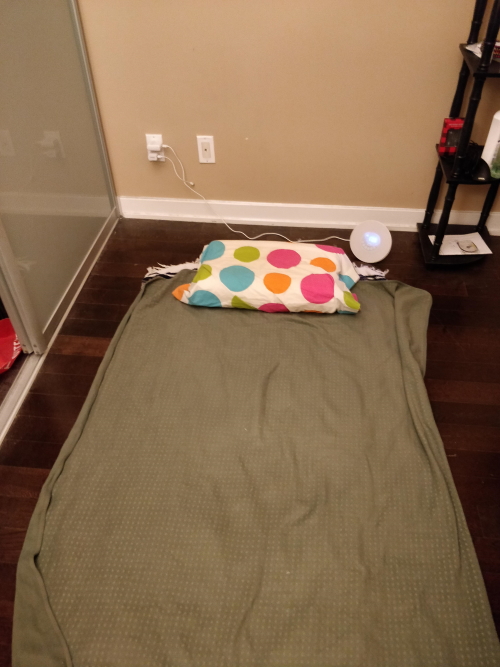 |
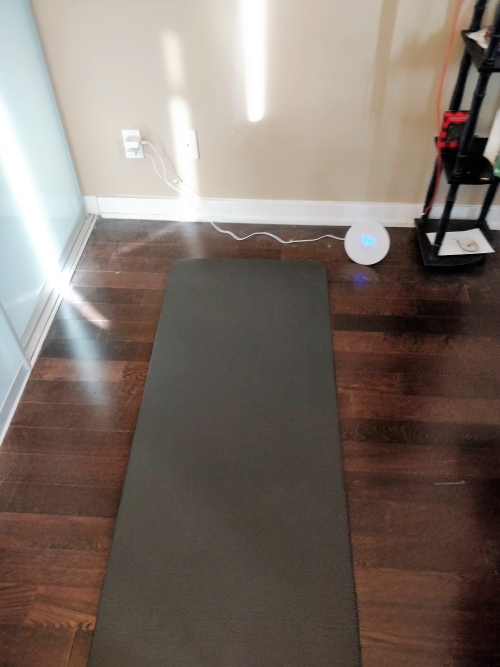 |
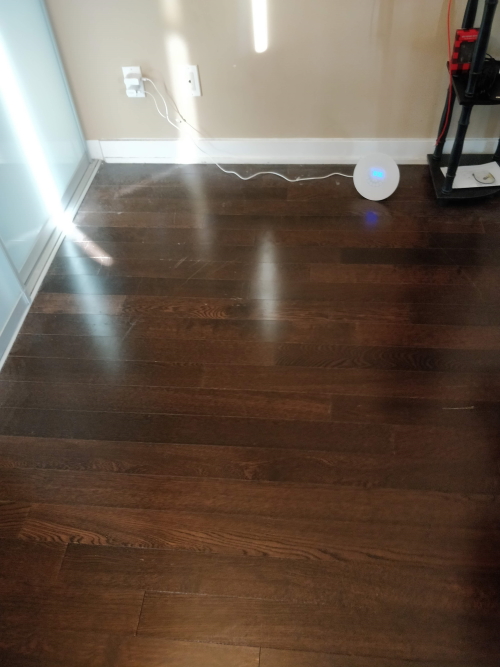 |
As you can see from the images, each day I lay down the yoga mat and 2 layers of thin sheets on top, to create the “bed”. Then, each morning, I roll it up again, and I can see the floor! For someone living in a small condo, this feels like doubling my room size.
Having the area free of clutter, or anything at all, has noticeably improved my mood, as if my mental clutter was reduced as well. I only came to this set up after lots of trial and error though - for many months when I first began, I left the yoga mat on the floor as a permanent fixture. Dust accumulated horribly and it was a mess. I much prefer rolling it up and creating the bed every day.
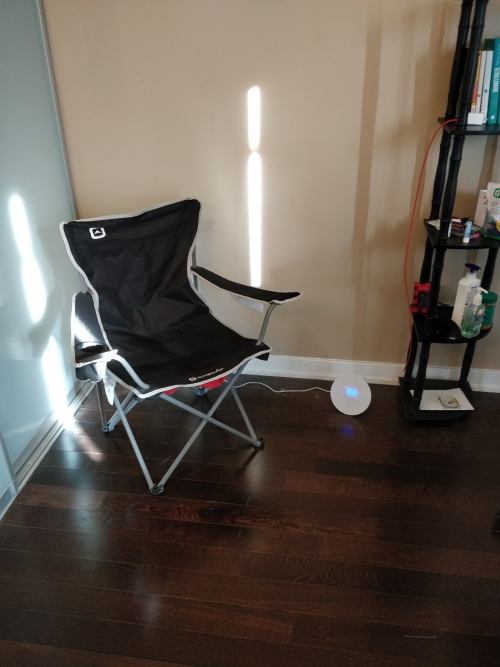 |
In the day time, I use the free space for a chair, to relax and unwind while being away from my monitors and facing the sunlit cityscape view from my floor to ceiling windows. Awesome for morning journaling! |
Getting back in touch with my childhood
| This is actually not the first time I’ve slept on a mat on the floor. I have slept on a portable tatami for many years, a common way of sleeping in Asia. Here’s an example of tatami mats. Disclaimer: I have no idea of the quality of this exact product, I’m just linking it for illustration. |
| What I slept on during my childhood is basically a double bed sized piece of the tatami, without any sheets on it, not even a fitted sheet. This had the effect of a cool yet springy surface with my bare skin on the tatami, which is great for the hot and humid climate of Taiwan. | 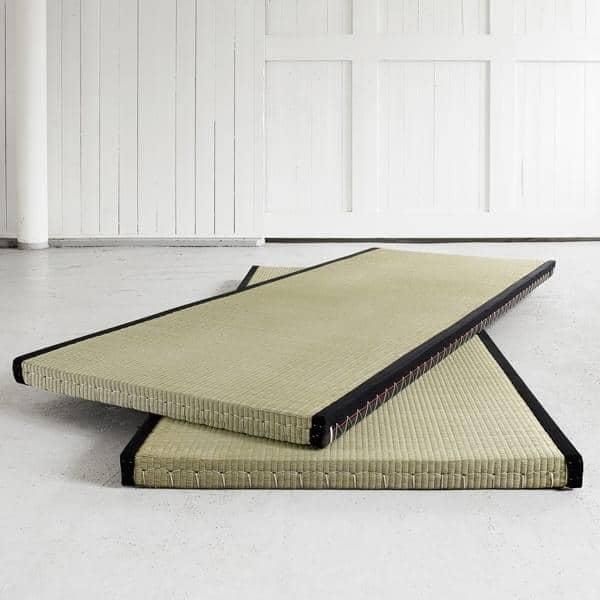 |
Caveats and warnings
Now that I’ve described what I enjoy about this set up, I want to make it clear that I am only sharing my experience - I am not asking you all to throw your mattress on the curb tomorrow. In fact, I don’t recommend it unless you’ve given it a lot of thought. There are many considerations to making this change - which my situation happened to allow for, explained below.
First of all, I worried about breathing in a lot of dust, so I bought a hand vacuum to keep the yoga mat area clean. Having the mat rolled up in the day time actually makes it easier to vacuum the whole room in general - in the past when I had bed frames, lots of dust and debris always accumulated underneath.
Secondly, for the last two years, my apartments have always had hardwood floors. There are issues with other types of flooring: If the room has carpet, dust might accumulate too easily and cause respiratory issues. If the floor is tiled, it might be too cold. As is, I also have two stacked blankets on top of the yoga mat, which is more than enough to not feel any chill from the hardwood floor. Hence, I would not try to use a yoga mat again if I moved somewhere without hardwood flooring.
Obviously, if you have any medical conditions that would make sleeping on a hard surface difficult, don’t. It might also take some trial and error to get an ideal yoga mat setup - in my case I had to purchase a memory foam pillow because a normal pillow made my neck sore. Other considerations to improve comfort are yoga mat thickness or padding amount on top of the yoga mat.
The exact yoga mat I used
I have frequently been asked about the specific yoga mat I used. I used the really basic black 1/2 inch thick yoga mat linked on Amazon, but in fact I have also used a thinner one from Walmart in the first year (can’t find the exact one to link to). However, I’d say that even the cheap ones will be sufficient, so they are interchangeable.
These two are the same, but linked regional stores. You can see the close-up images of this exact yoga mat I own and slept on the floor with, below.
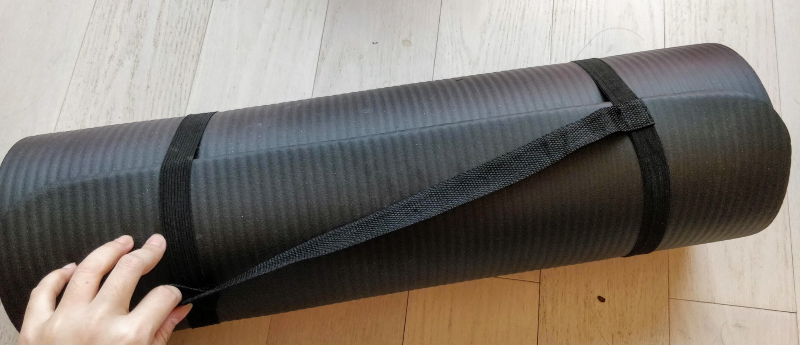 The exact yoga mat I used to sleep on the floor.
The exact yoga mat I used to sleep on the floor.
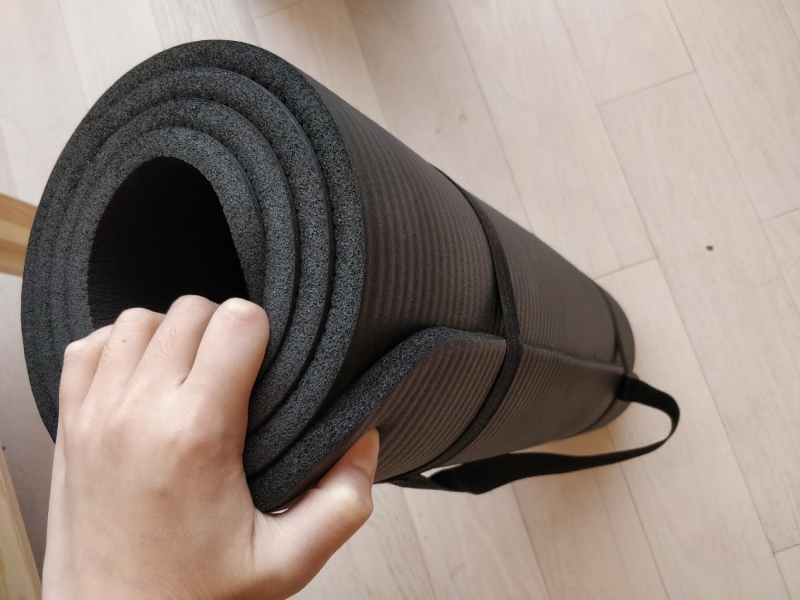 The 1/2 inch thickness does make a difference.
The 1/2 inch thickness does make a difference.
Conclusion
This is yet another one of my life experiments that I’ve been documenting - I often make variations to my habits and systems, just to see what sticks. This is one that I’m happy has improved my life, after lots of trial and error! It fixed the back soreness I had from sleeping on a subpar mattress, lets me sleep well, and saves money, too.
It’s also improved my relationship with physical belongings - getting over the idea of needing to own a bed caused monumental mindset shifts in my attitude towards other belongings. I feel that I now have a healthier way of making purchases that do improve my life, and not just for hoardings’ sake.
So for now, I’m keeping the yoga mat. Though, if I move again I’ll always consider changing back to a proper bed, if the flooring or other circumstances don’t allow for this set up.
[Update: as of summer 2020, I moved again and finally got a bed; the second-hand bed frame was generously given to me by a friend.]
More articles about "lifestyle"
- How I chose studio recording equipment for livestreaming and working remotely, for under $150 CAD
- Browse all articles about lifestyle